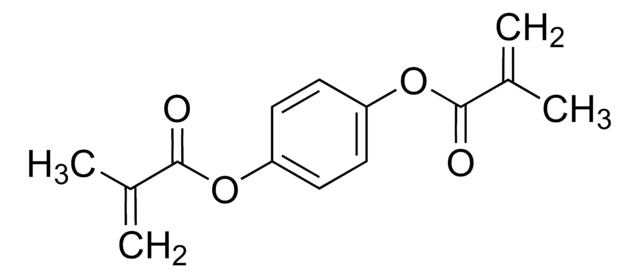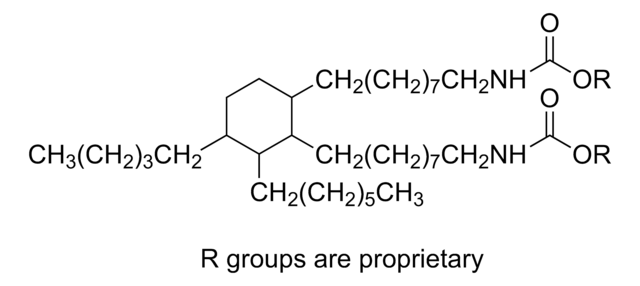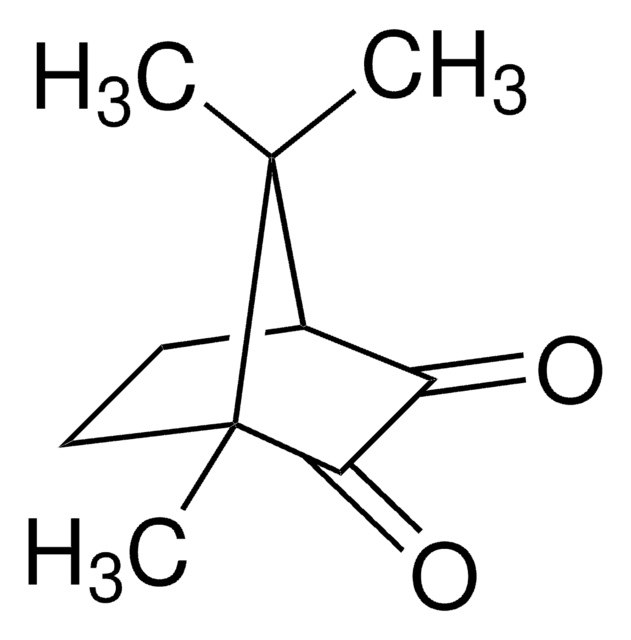Wichtige Dokumente
411167
Bisphenol A-Glycerolat (1 Glycerol/Phenol)-diacrylat
contains MEHQ as inhibitor
Synonym(e):
2,2-Bis[4-(3-acryloyloxy-2-hydroxypropoxy)phenyl]propane, 2,2-Bis[acryloyloxy(2′-hydroxypropyloxy)phenyl]propane, Bisphenol A glycerolate diacrylate
About This Item
Empfohlene Produkte
Enthält
MEHQ as inhibitor
250-500 ppm MEHQ as inhibitor
Brechungsindex
n20/D 1.557 (lit.)
Viskosität
2000-4000 cP(65 °C)(lit.)
Säurezahl
<5 mg KOH/g
Dichte
1.18 g/mL at 25 °C (lit.)
SMILES String
CC(C)(c1ccc(OCC(O)COC(=O)C=C)cc1)c2ccc(OCC(O)COC(=O)C=C)cc2
InChI
1S/C27H32O8/c1-5-25(30)34-17-21(28)15-32-23-11-7-19(8-12-23)27(3,4)20-9-13-24(14-10-20)33-16-22(29)18-35-26(31)6-2/h5-14,21-22,28-29H,1-2,15-18H2,3-4H3
InChIKey
VZTQQYMRXDUHDO-UHFFFAOYSA-N
Verwandte Kategorien
Anwendung
Leistungsmerkmale und Vorteile
Physikalische Form
Signalwort
Warning
H-Sätze
Gefahreneinstufungen
Skin Sens. 1
Lagerklassenschlüssel
10 - Combustible liquids
WGK
WGK 3
Flammpunkt (°F)
235.4 °F - closed cup
Flammpunkt (°C)
113 °C - closed cup
Persönliche Schutzausrüstung
Eyeshields, Faceshields, Gloves, type ABEK (EN14387) respirator filter
Hier finden Sie alle aktuellen Versionen:
Besitzen Sie dieses Produkt bereits?
In der Dokumentenbibliothek finden Sie die Dokumentation zu den Produkten, die Sie kürzlich erworben haben.
Kunden haben sich ebenfalls angesehen
Unser Team von Wissenschaftlern verfügt über Erfahrung in allen Forschungsbereichen einschließlich Life Science, Materialwissenschaften, chemischer Synthese, Chromatographie, Analytik und vielen mehr..
Setzen Sie sich mit dem technischen Dienst in Verbindung.










